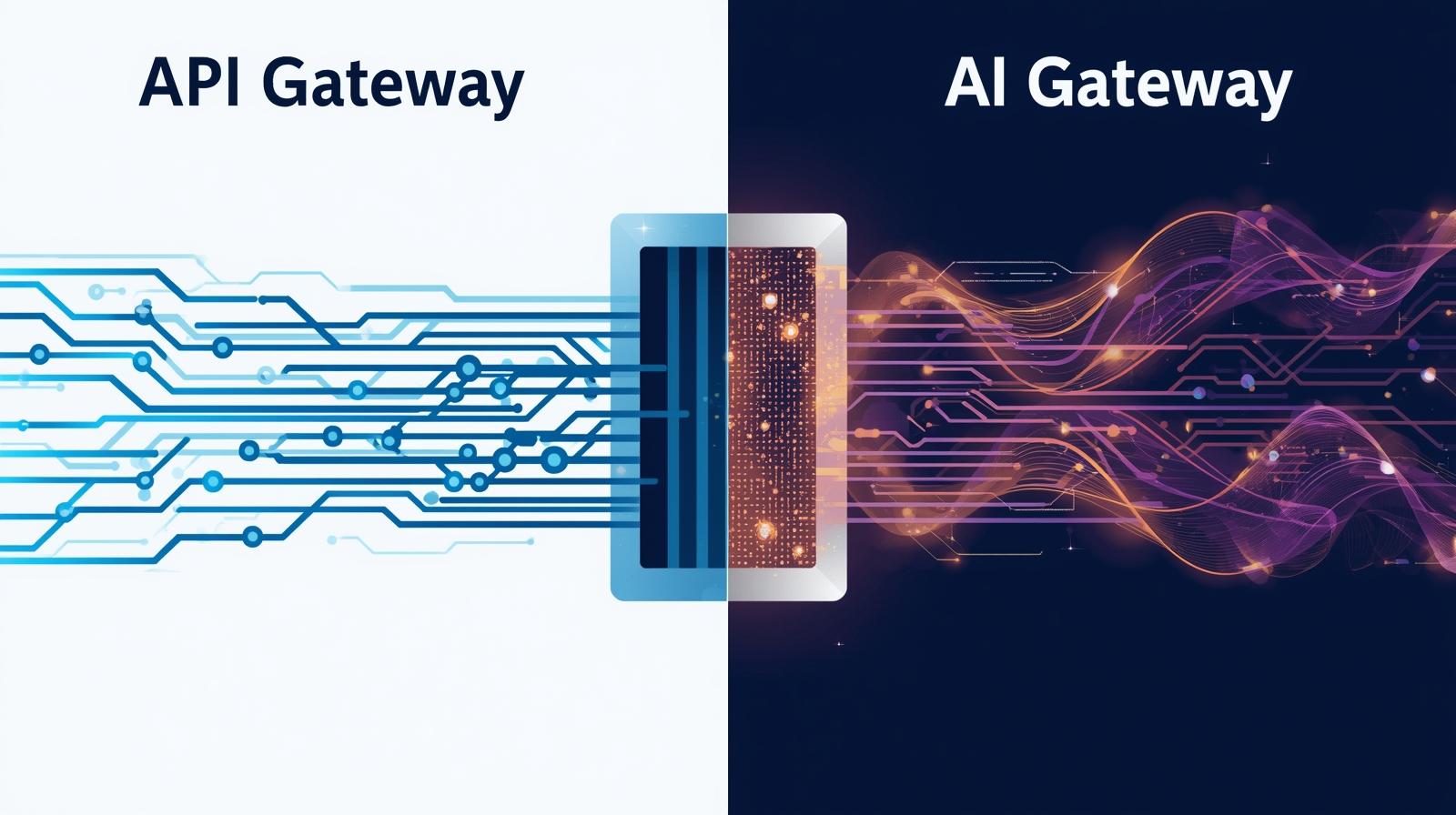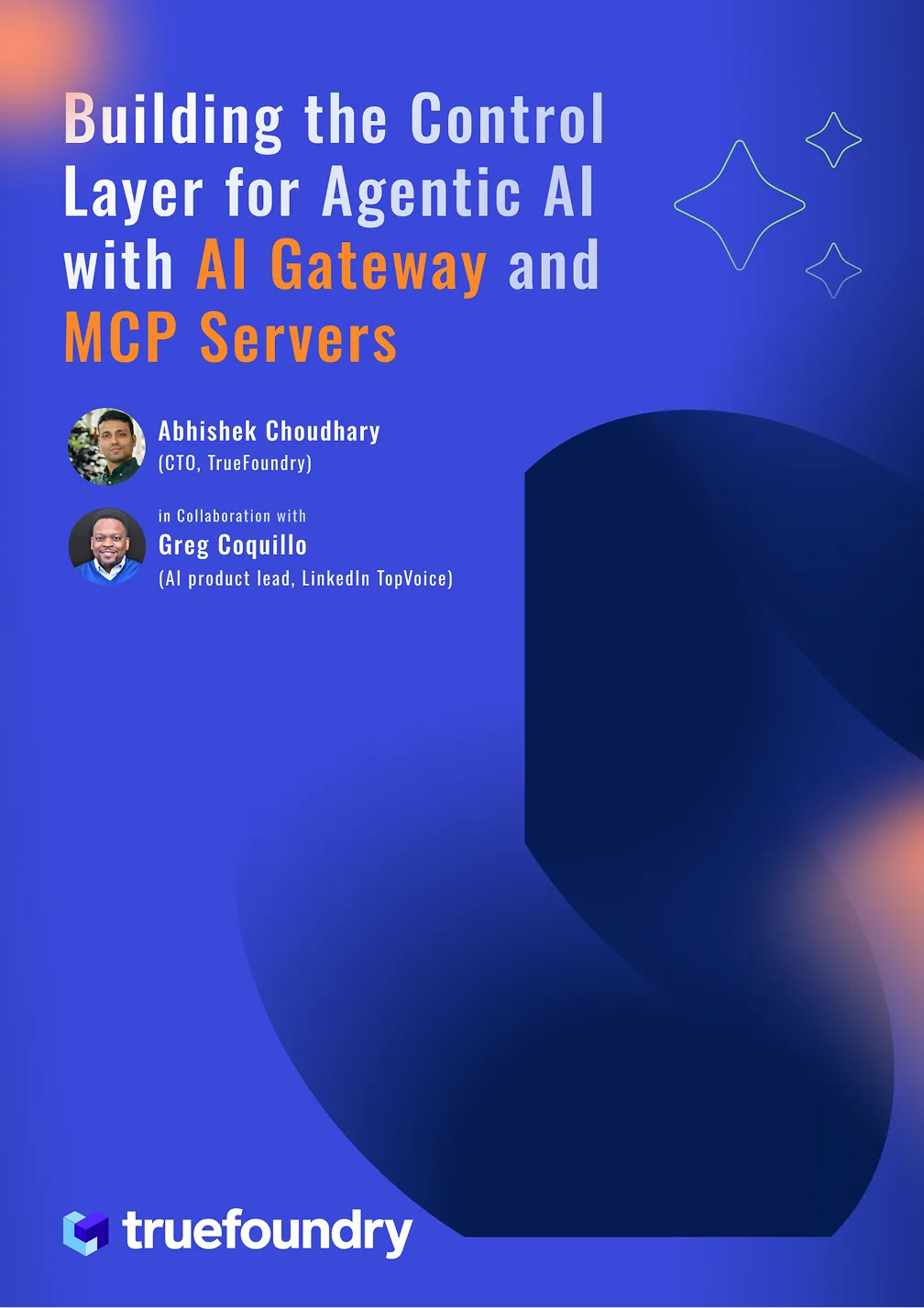LiteLLM vs OpenRouter: Which is Best For You ?
In today’s AI-driven landscape, efficient and scalable deployment of large language models is crucial for enterprises seeking to integrate advanced natural language capabilities into their applications. LiteLLM and OpenRouter have emerged as prominent solutions in this space, each offering unique features to streamline inference and management of LLM workloads. While LiteLLM focuses on lightweight, edge-friendly model serving with minimal dependencies, OpenRouter provides a cloud native gateway for routing requests across multiple providers and handling dynamic traffic. This blog will compare LiteLLM and OpenRouter, explore TrueFoundry’s unified AI inference and LLMOps platform, and guide you on choosing the right tool for your specific needs.
What Is OpenRouter?

OpenRouter is a unified API gateway that provides developers with a single endpoint to access a wide range of large language models (LLMs) from multiple providers such as OpenAI, Anthropic, Google’s Gemini, Cohere, and Mistral. By consolidating hundreds of models under one interface, OpenRouter eliminates the need to manage separate API keys, SDKs, and billing arrangements for each provider. The platform intelligently routes requests to the most cost-effective and available model instances, automatically falling back to alternatives if a provider is temporarily unavailable. OpenRouter supports seamless integration with existing OpenAI-compatible SDKs, allowing teams to switch providers without rewriting their application code.
Under the hood, OpenRouter maintains a distributed infrastructure at the edge, adding minimal latency, typically around 25 ms, to each request while ensuring high availability and throughput. Developers can purchase credits and allocate them across any model or provider, with transparent pricing displayed in the dashboard for input and output tokens. The dashboard also provides analytics on monthly token usage (over 7.9 trillion tokens processed) and error rates, helping teams monitor performance and spending.
OpenRouter includes advanced features such as prompt caching, custom data policies for compliance, and traffic‐shaping controls that let you set rate limits or prioritize certain providers based on business rules. The platform’s REST API endpoint is fully documented with examples for cURL, JavaScript, and Python, simplifying onboarding for new users. With over two million global users and 300+ supported models, OpenRouter has become a go-to solution for teams that need vendor-agnostic LLM access and robust routing logic.
What Is LiteLLM?

LiteLLM is an open-source LLM gateway and Python SDK designed to simplify access to over 100 large language models through a unified, OpenAI-compatible interface. It offers a proxy server component, LiteLLM Proxy Server, that acts as a central gateway for routing requests across multiple providers, handling load balancing, retries, and fallbacks automatically. Developers can also embed LiteLLM directly in their Python code via the LiteLLM SDK for in-process calls, benefiting from the same unified API without running a separate service.
Key features include spend tracking and budget enforcement, enabling teams to set per-project or per-team budgets and rate limits in YAML or via virtual API keys. All token usage, both input and output, is logged and attributed to the appropriate owner, with optional logs shipped to S3, GCS, or analytics platforms for downstream processing. LiteLLM’s fallback logic lets you define alternative providers for any model; for example, if Azure’s OpenAI service fails, LiteLLM can automatically retry on OpenAI’s public endpoint without code changes.
The proxy server supports customizable guardrails and caching, allowing platform teams to inject business-specific logic such as prompt sanitization or response caching at the edge. Because LiteLLM adheres to the standard OpenAI request and response format, integration requires minimal code adjustments; existing applications simply switch the API endpoint to LiteLLM’s proxy.
By abstracting complexity around API keys, provider SDKs, and billing setups, LiteLLM accelerates enterprise adoption of LLMs. It empowers both platform engineers and application developers with a consistent, policy-driven approach to managing cost, reliability, and governance across diverse LLM ecosystems.
LiteLLM vs OpenRouter
LiteLLM gives you full control over your LLM stack with a self-hosted proxy, policy-as-code via GitOps, and deep integration with existing observability tools, making it ideal for platform teams that need custom governance and on-prem deployments. OpenRouter, by contrast, is a fully managed edge SaaS offering that requires no hosting overhead, provides a single credit-based billing model across hundreds of models, and delivers broad provider coverage out of the box, perfect for teams who want rapid setup and turnkey routing without infrastructure management.
When to Use OpenRouter?
OpenRouter shines when you need a turnkey, multi-provider LLM gateway that minimizes infrastructure overhead and accelerates time to market. Its SaaS-based edge network, unified billing, and intelligent routing make it ideal for teams that prioritize rapid integration, broad model access, and out-of-the-box resilience. Below are key scenarios where OpenRouter provides the greatest value.
- Rapid Onboarding and Integration
If you want to start routing requests to multiple LLM providers in minutes, OpenRouter’s single OpenAI-compatible API endpoint lets you switch from direct provider calls with no code changes. You simply configure your existing OpenAI SDK to point at the OpenRouter endpoint and supply your OpenRouter API key. Development teams can then focus on application logic rather than managing proxies or infrastructure.
- Broad Provider Coverage under One Account
When your use case demands access to the latest and most capable models such as GPT-4, Anthropic’s Claude, Google’s Gemini, Cohere, and Mistral, OpenRouter consolidates hundreds of options under a single billing umbrella. This approach eliminates the need to juggle separate API keys, SDKs, and invoices, and gives you the flexibility to experiment with different models without integration friction.
- Edge-Optimized Performance and High Availability
For latency-sensitive applications, OpenRouter runs a globally distributed edge network that adds minimal overhead per call while maintaining enterprise-grade uptime. Its intelligent routing engine monitors provider health and automatically fails over to alternatives if one endpoint experiences downtime, ensuring uninterrupted service.
- Simplified, Credit-Based Billing
OpenRouter’s credit system abstracts away the complexity of per-provider token pricing. You purchase credits once and allocate them across any model or provider. Transparent dashboards show per-token costs, total usage, and spending trends, helping you manage budgets without reconciling multiple bills.
- Built-In Traffic Shaping and Compliance Controls
When you need to enforce rate limits, data policies, or traffic prioritization, OpenRouter’s dashboard offers visual controls for traffic shaping and custom data policy rules. This is especially helpful in regulated environments where prompts must only go to approved models or reside in specified regions.
- Ideal for Prototype to Production
Whether you are rapidly prototyping an AI feature or scaling a production workload, OpenRouter adapts seamlessly. Its managed infrastructure removes the burden of capacity planning. Analytics on token usage, error rates, and request heatmaps let you optimize performance and cost as you grow.
In these scenarios, such as fast integration, diverse model experimentation, strict latency requirements, unified billing, and policy-driven routing, OpenRouter provides a powerful, hassle-free solution for managing LLM workloads at scale.
When to Use LiteLLM
LiteLLM offers two main interfaces, a self-hosted proxy server and a Python SDK, each optimized for different scenarios. Choose LiteLLM when you need centralized governance, seamless multi-provider access, spend control, or lightweight in-process LLM calls.
Central LLM Gateway for Platform Teams
Use the LiteLLM Proxy Server if you require a unified service to route requests across over 100 LLM providers. It handles load balancing, automatic retries, and fallbacks without code changes, giving platform teams a single endpoint to manage LLM access at scale. You can define per-project or per-team budgets and rate limits in YAML, and LiteLLM logs all token usage for auditing or downstream analytics.
Embedded Python SDK for Application Developers
If you are building an LLM-powered feature directly in Python, use the LiteLLM Python SDK. It offers the same unified API as the proxy but runs in-process, eliminating network hops and simplifying local development. The SDK includes built-in retry and fallback logic so that if one provider is unavailable, calls automatically switch to a secondary endpoint without additional code.
Multi-Cloud Orchestration and Redundancy
Enterprises often use multiple cloud providers to optimize costs or ensure high availability. LiteLLM lets you distribute requests across different LLM vendors based on custom rules, ensuring workload resilience and cost efficiency. This orchestration is crucial when SLA requirements demand seamless failover between providers.
Budget Enforcement and Spend Tracking
When cost predictability is a priority, LiteLLM’s budget enforcement feature prevents teams from exceeding predefined quotas. All input and output tokens are attributed to virtual API keys or projects. Detailed logs can be shipped to S3, GCS, or analytics platforms for comprehensive cost analysis, helping prevent unexpected billing surprises.
Custom Guardrails, Caching, and Business Logic
Platform teams can inject business-specific logic such as prompt sanitization, response caching, or content filtering at the proxy layer. These guardrails enforce compliance, reduce downstream load, and improve response times without modifying application code.
Self-Hosted Deployments and On-Prem Requirements
For organizations with strict security or compliance needs, LiteLLM supports self-hosting via Docker or Kubernetes. Best practices for production include running a single Uvicorn worker, using Redis for caching, and managing database migrations through Helm hooks. This flexibility ensures you can meet on-prem or VPC deployment requirements.
Lightweight Prototyping and Experimentation
When rapid prototyping is needed, LiteLLM’s minimal setup lets developers switch providers by changing environment variables or endpoint URLs. The open-source SDK makes it trivial to experiment with different models and configurations before committing to a managed service.
By selecting LiteLLM in these scenarios, teams gain a consistent, policy-driven framework to manage cost, reliability, and governance across diverse LLM ecosystems without sacrificing flexibility or performance.
Open router Vs Lite LLM - Which is best?
Choosing between LiteLLM and OpenRouter hinges on your team’s priorities: if you need full control over deployment, customizable policies, and in-depth observability within your own infrastructure, LiteLLM is the better fit. If you prefer a turnkey, globally distributed SaaS gateway with minimal setup and unified billing across dozens of models, OpenRouter delivers rapid integration and managed reliability.
- Deployment & Control: LiteLLM is an open-source proxy and SDK you can self-host on Docker or Kubernetes, giving you complete ownership of your inference stack. Configuration lives in YAML, enabling GitOps workflows for rate limits, budgets, and fallback rules under your version control system. OpenRouter, in contrast, is a fully managed edge service with no hosting, scaling, or patching required. You consume a single SaaS endpoint and let OpenRouter handle global distribution and failover logic.
- Observability & Governance: With LiteLLM, you get structured logging of prompt-response pairs, token metrics, and metadata callbacks for integrations with Helicone, Langfuse, and OpenTelemetry. You can route logs to S3 or analytics platforms for custom dashboards. OpenRouter provides built-in analytics on token usage, cost per call, error rates, and request heatmaps, all accessible via its dashboard without additional setup. Governance in LiteLLM is code-centric; in OpenRouter, it is managed via UI controls for traffic shaping and data policies.
- Cost Model & Billing: LiteLLM tracks spend per virtual API key or project, enforcing budgets in real time and shipping usage logs for downstream cost analysis. You pay each underlying provider directly. OpenRouter uses a credit-based system that abstracts individual provider pricing, consolidating all costs under a single invoice and credit pool.
Recommendation
If your organization requires on-premise deployments, policy-as-code governance, and tight integration with existing observability tools, LiteLLM is the superior choice. If you value zero-maintenance setup, a unified API across hundreds of models, and managed reliability at the edge, OpenRouter will accelerate your AI roadmap.
TrueFoundry - Best AI Gateway
TrueFoundry offers full-stack model deployment with autoscaling and observability, unlike LiteLLM and OpenRouter, which focus mainly on LLM routing. It supports both custom and foundation models, enabling fine-tuning, versioning, and secure hosting out of the box. TrueFoundry is enterprise-ready with robust MLOps, while LiteLLM/OpenRouter are more lightweight API proxies. Its AI Gateway provides centralized control, rate-limiting, caching, and monitoring for all AI model endpoints.
AI Gateway

TrueFoundry’s AI Gateway offers a unified OpenAI-compatible API for accessing over 250 models, including both public LLM providers and self-hosted endpoints like vLLM and TGI. The proxy pods perform routing, authentication, rate limiting, load balancing, and guardrail enforcement inline, maintaining in-memory logic for ultra-low latency. Configuration is stored centrally, and updates are propagated in real time via NATS messaging, enabling seamless policy changes with no impact on running traffic.
The proxy layer is stateless and horizontally scalable, ensuring it can handle variable inference loads efficiently. Observability is baked into the architecture, with logs and metrics sent asynchronously for non-blocking performance. Overall, the Gateway simplifies LLMOps by combining core capabilities into a single, managed platform.
Rate Limiting, Guardrails, Fallback Mechanism

TrueFoundry’s rate-limiting capabilities support granular control across teams, users, and models with real-time enforcement. Guardrails allow defining ordered rule sets that inspect both input and output, helping filter unwanted content before it reaches downstream systems.
Fallback policies are declarative and activate when a model fails or returns certain errors; they automatically reroute requests to alternate endpoints and can adjust parameters as needed. This tri-layered setup, rate control, guardrail inspection, and fallback routing ensure reliable and policy-compliant performance. Real-time dashboard metrics indicate how often limits are hit, guardrails triggered, and failovers executed, aiding in tuning and operational insight.
Observability at Prompt and User Level

TrueFoundry’s Gateway collects detailed telemetry such as per-request latency, token counts, guardrail and rate-limit triggers, and fallback events. Metrics are tagged with prompt ID, user, team, model, and custom metadata, enabling traceability from individual prompts through full interaction flows. Audit logs store request details, policy decisions, and metadata for compliance and forensic purposes.
All observability data is ingested asynchronously into high-performance stores like ClickHouse and OpenTelemetry-compatible tools. Dashboards allow slicing usage by team or user, exporting logs for billing, compliance, or ROI reporting. This visibility enables iterative optimization and ensures transparency and accountability across the stack.
Model Serving and Inference

TrueFoundry supports serving both self-hosted LLMs and external providers through a unified interface. Model endpoints are configured centrally, and proxy pods dynamically apply batching, caching, and load-balancing during inference. Fallback logic ensures that if a model fails or becomes unavailable, requests are routed to predefined alternatives.
This orchestration removes the operational burden of wiring multiple model servers. It supports autoscaling for compute resources, ensuring high throughput with minimal manual intervention. As a result, teams gain flexibility to deploy, scale, and balance multiple backends without custom scripts or integrations.
Best-in-Class Security with Authentication and RBAC
The Gateway enforces authentication using API keys or SSO integrations and applies role-based access control per user or team. RBAC policies are centrally defined and enforced inline at the proxy level, ensuring only authorized interactions. Secrets such as API keys, model credentials, and TLS certificates are stored securely using Kubernetes secrets or external vaults.
Every request and administrative change is logged for audits, ensuring compliance with regulations like SOC 2, HIPAA, and GDPR. This integrated security posture defends against misuse, privilege escalation and ensures traceability across all model usage.
TrueFoundry’s AI Gateway provides a unified OpenAI-compatible API to access over 250 models, including public and self-hosted options like vLLM and TGI. It handles routing, rate limiting, guardrails, and fallback logic inline with ultra-low latency and horizontal scalability. The platform offers deep observability at the prompt and user level, capturing telemetry for traceability, optimization, and compliance. It supports autoscaling, centralized configuration, and efficient orchestration of both foundation and fine-tuned models. With built-in authentication, RBAC, and secure secret management, TrueFoundry ensures enterprise-grade security aligned with SOC 2, HIPAA, and GDPR requirements.
Conclusion
Choosing the right AI gateway depends on your infrastructure, compliance, and operational needs. OpenRouter is ideal for teams seeking instant, multi-provider LLM access with zero maintenance. LiteLLM caters to platform teams needing self-hosted control, policy-as-code governance, and observability integration.
TrueFoundry, however, stands out by offering an end-to-end enterprise-grade platform combining unified LLM routing, rate limiting, fallback logic, prompt-level observability, and secure model hosting. It is purpose-built for teams that demand performance, security, and scalability in production. Whether you are prototyping or scaling AI across departments, TrueFoundry delivers unmatched depth and control in a single integrated solution.
Built for Speed: ~10ms Latency, Even Under Load
Blazingly fast way to build, track and deploy your models!
- Handles 350+ RPS on just 1 vCPU — no tuning needed
- Production-ready with full enterprise support
TrueFoundry AI Gateway delivers ~3–4 ms latency, handles 350+ RPS on 1 vCPU, scales horizontally with ease, and is production-ready, while LiteLLM suffers from high latency, struggles beyond moderate RPS, lacks built-in scaling, and is best for light or prototype workloads.


















